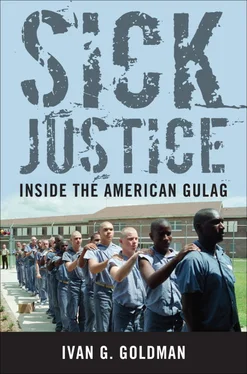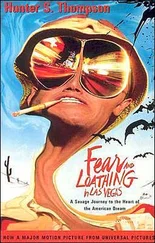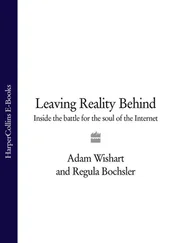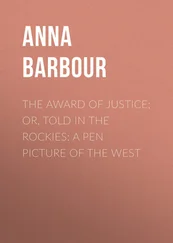Robert Cassidy, a former associate editor of Ring magazine, wrote about Fletcher and holes in the case against him in the August 2000 issue. Ake Sintring, who lives in Sweden, read the article and eventually formed a group to work on Fletcher’s behalf. After Sintring brought the case to my attention, I wrote about it in a column for the September 2011 issue of Ring and later in a series of articles for BoxingInsider.com. Although Fletcher’s history as a prizefighter lifted his case from the pile and got it attention, reversing a conviction is still a steep uphill climb, particularly when the defense attorney fails to lay out grounds for appeal during the trial. Fletcher was caught in a perfect storm. Although Patrizio did an awful job defending his client, somehow his mistakes were deemed not quite grievous enough to win a new trial. So the case has withstood legal challenges even though the charges were never fairly tested. What Fletcher got wasn’t imperfect justice, which, though less than desirable, might be understandable. Fletcher’s case is an example of sloppy justice, something no one should have to settle for. His attorney never tried to contact Hydow Park, the chief medical examiner who conducted the autopsy. Park later testified during the appeals process that had he been subpoenaed, he’d have supported Fletcher’s story, not Grant’s, as conforming to the postmortem evidence. 5
COPS, CROOKS, CONFUSION
When informants like Natalie Renee Grant trade favors with authorities, the resulting relationships can sometimes wander into foggy regions where cops and crooks aren’t sorted easily. Boss and subordinate might even switch roles. Ex-LAPD detective Mike Rothmiller learned early in his career that drug informants regularly build their own sales and avoid arrest by informing on their enemies, who are generally competing dealers. 6Their police handlers also win in this deal by padding their arrest statistics. Rothmiller recalls arranging to meet a DEA agent at an informant’s home. When he entered the living room, he was startled to find the informant cutting up a mound of cocaine on a glass coffee table and dividing it into sales packages. The agent privately explained to Rothmiller that the dealer claimed to have information on a major marijuana-growing operation. “You gotta do what you gotta do,” he told Rothmiller with a shrug. 7
Barbara Dougan of Families Against Mandatory Minimums (FAMM) pointed out another dubious trick: catch a drug offender and convince the individual to “reel some other poor slob in.” 8Cops pressure the informant to set up bigger purchases to trigger a longer mandatory sentence. They may also instruct informants to set up a buy at an address near a school. That adds another two years. When it works, police can boast of nabbing a kingpin selling drugs around schoolchildren when in fact they’ve used their authority to create a farce. This happened to Tony Ealy, who in 1994, after being laid off by a failed company in Michigan (he’d also experienced layoffs from two previous employers), was introduced to crack by a former coworker. 9Ealy, a workingman his whole life, was quickly hooked. He learned to sell part of his purchases to interested friends to support his habit, but he never bought more than fifty dollars’ worth. When police found drugs on a young woman acquaintance, she turned informant. The woman and her handlers set up controlled buys from Ealy. Accompanied by her “boyfriend,” an undercover cop, the woman demanded escalating amounts, luring Ealy into larger deals on both ends. In six weeks, thanks to police encouragement, the quantities went from an eighth of a gram to 250 grams. On the fifth and largest sale, police closed in. Ealy pleaded guilty and in 1995, at age thirty-four, was sentenced to 33 to 110 years under the state mandatory minimum laws then in force.
Ealy enrolled in every drug rehab program he could find in the prison system, and finally in December 2010 the state legislature, following the advice of the parole board, commuted his sentence. He was released after spending nearly a third of his life behind bars.
Sometimes when informants experience pangs of conscience, police call upon special tactics. For example, Los Angeles police ran into trouble trying to convince a pimp named John Jones to turn informant and lie for them in a 1994 murder trial. So they lied to Jones, informing him that other witnesses had positively identified Obie Anthony and Reggie Cole as the gunmen who shot down Felipe Gonzalez Angeles outside a whorehouse. They also told Jones that they had additional evidence against Anthony and Cole even though they didn’t. Jones never got a good look at the gunmen, but assuming he’d be fingering two guilty men, he went along with the police officers’ plan. In exchange for his false testimony, prosecutors promised to give him a lighter sentence on pandering charges. Then they sat mute as Jones, in the witness box, said what he’d been coached to say, which included a declaration that he’d been promised no favors or special treatment for his testimony.
Ironically, the case unraveled after Cole, claiming self-defense, stabbed another inmate to death in Calipatria State Prison in 2000. Because he’d already been convicted of the 1994 murder, he was now at risk for the death penalty. That prompted students interning for the Northern California Innocence Project to look into his case. As they dug into the facts of the inmate slaying, they reviewed the bawdy-house shooting and uncovered a torrent of lies and fabrications, including the dirty deal cops made with Jones. They found that detectives had prompted a second witness by tapping on the photos of Cole and Anthony during an identification session.
Eventually Cole agreed to plead guilty to manslaughter in the prison slaying so that his conviction for the whorehouse killing would be overturned, and he and Anthony were both released after seventeen years in prison. But despite its lies and other extralegal tactics used to secure convictions, the Los Angeles District Attorney’s Office still fought to keep them locked up. “When someone gets killed at a brothel, your witnesses aren’t going to be priests and nuns,” prosecutor Scott Collins said. The judge who released Anthony berated prosecutors for withholding evidence, but apparently the scolding was the extent of their punishment. 10
The New York Innocence Project found that in more than 15 percent of wrongful convictions overturned by DNA testing, an informant or jailhouse snitch had testified against the defendant. “Often, statements from people with incentives to testify—particularly incentives that are not disclosed to the jury—are the central evidence in convicting an innocent person,” said the study. The study found both snitches who had been paid to testify and others who testified in exchange for their release from prison. It also found witnesses who “testified in multiple distinct cases that they have evidence of guilt, through overhearing a confession or witnessing the crime.” 11
KILLER INFORMANT
In a notorious case of confused loyalties and nebulous justice, informant James “Whitey” Bulger, a powerful Irish mob boss in the Boston area, worked secretly with the Federal Bureau of Investigation (FBI) to convict his rivals in the Italian Mafia during the 1980s. His handler, John Connolly, who grew up in Bulger’s neighborhood, became an agency star as the Italian mob was gradually taken apart thanks to his connection to Bulger. Meanwhile, Bulger, shielded from arrest, prospered while also committing a string of murders plotted with his ally Stephen “the Rifleman” Flemmi. G-men looked the other way while their informant murdered people. 12When Martin Scorsese made his Oscar-winning film The Departed , which was based largely on the Bulger case, many considered the police characters’ indifference to the rising body count unrealistic. But their passivity was in fact true to life.
Читать дальше












